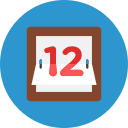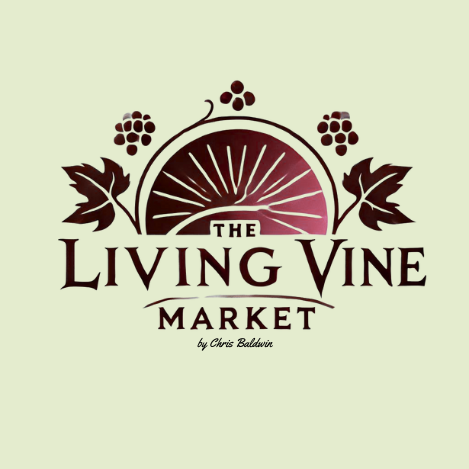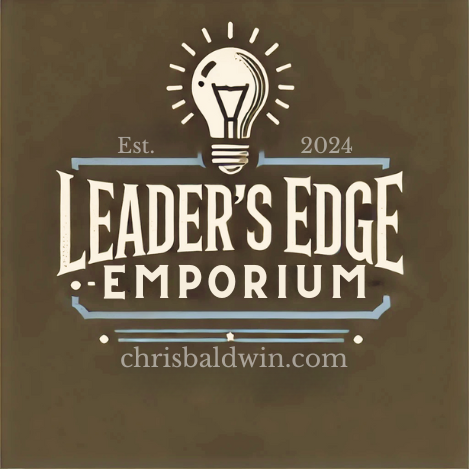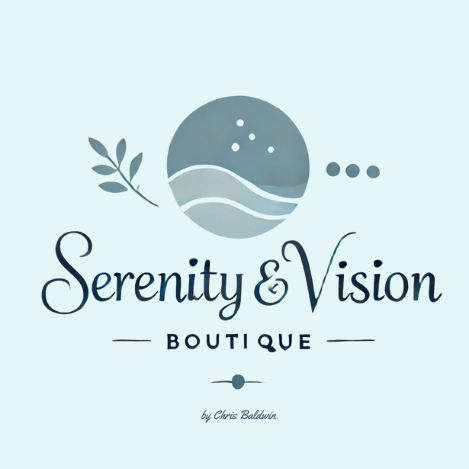While working with Christian Bloggers, I’ve discovered many face the same 2 problems…(1) How do you attract new readers…(2) and how do you keep those new readers coming back to your blog? In this post, I break down each of these 2 problems…and their solutions.

Problem 1: How to Attract New Readers
The first question I’m always asked is “How do I grow my audience?” How do I get people to actually visit my website and read my content? I’ve broken down the answer into 7 separate categories: Platforms, Identification, Domains, Headlines, Marketing, Visuals, and SEO.
Chose the Correct Platform
One of the simplest things you can do to attract readers is make sure you’re using the correct platform. What I mean by this is ensure that your platform conveys that you’re a professional.
You want to become the expert in your field, the go-to source for solving problems concerning your niche. The first impression your potential audience will have with you is your blogging platform. What does it look like? Is it easy to navigate? Does it convey you’re a professional?
One of the biggest hurdles many Christian Bloggers face is choosing between WordPress.com and WordPress.org. Don’t worry, I’ve got you covered. I’ve written an entire post on which WordPress you should be using and how to switch. Click Here to read it.
Have a Good Domain Name
Similar to having a good platform, you also need a good domain name. I highly recommend getting a domain that ends in .com. You can chose from a domain name that targets your niche or you can build a personal brand.
A personal brand is where your domain is your first and last name. For example, I have a personal brand and my website is ChrisBaldwin.com.
One of the reasons your domain name is so important is its how people will remember you…so need a domain that’s easy to remember.
The easier it is to remember, the more likely people will pass it along to their friends…that is if you’re creating good consistent content that’s solving their problems.
You can get most domain names for pretty cheap…like $15 dollars a year or so. Bluehost, the company I recommend for web hosting, offers a free domain name registration with each account. Check out Bluehost Here to get your domain and web hosting.
Identify Your Ideal Reader
Makes it clear who you’re writing for. Your readers should be able to visit your blog and know whether it’s for them. You can’t write for everybody because…if you try…you’ll be writing to nobody.
Pick a niche that you’re passionate about and let your readers know what topics you’ll be covering. For example, I help Christian Bloggers create, grow, and leverage their online platform for the Kingdom. So, if you’re a Christian Blogger…or want to start blogging…then I’m writing for you.
Think about it. If you’re looking up ways to cook authentic Italian food, are you going to search through a cooking blog that covers everything from Indian, Mexican, American, Italian, and everything in between…or…are you going to visit the blogger who blogs on cooking authentic Italian food.
The general cooking blog might have some good tips and receipts, but you likely won’t even visit it to know. You’re going straight to the authentic Italian food blog.
You can always pivot or expand later as your audience grows…but even so, you need to expand in your niche.
For example, later I might expand to include Christian Podcasters…but the niche will remain the same…helping Christians create, grow, and leverage their online platform for the Kingdom.
Use Headlines that Work
The headline is the first piece of copy a person will read. It needs to be good. Based on the headline, a person will determine if they’ll click on the link and read your post.
When crafting headlines, use headlines that appeal to your niche and promise value. Also, you’d want to include your SEO keywords in your headline. So…take time crafting what your posts will be titled.
Ask yourself, what is the single…most important thing…I want my readers to take away from this post? Then try and craft a headline from that single thing.
One thing I like to do is have several headlines for one blog post…I then choose the best one. 99% it’s not the first headline I write down.
Headline Templates
Some great headlines templates you can use in crafting your posts:
- How to…
- The easiest way to…
- The quickest way to…
- Why…
- Which…
- Are you…
- What to do when …
- 7 Steps to…
- Never…
These headlines will promise value. Therefore, the reader will know by reading the headline if they need the information in that post. For example, here’s where I used some the same headlines in my blog.
- How to Start a Christian Blog
- How to Make Money as a Christian Blogger
- Which WordPress Should You Use?
- 7 Reasons You Should Start Blogging
- Are Inner Vows Destroying Your Life and Business?
These are just a starting point to help you start crafting great headlines. I’d recommend trying to create 7 headlines for each post and then select the one you like the best. Try different variations. For Example, let’s use my How to Start a Christian Blog post. My list could include:
- How to Start a Christian Blog
- The Easiest Way to Start a Christian Blog
- The Quickest Way to Start a Christian Blog
- Why you Should Start a Christian Blog
- Are You Starting a Christian Blog?
- What to do When Starting a Christian Blog
- 10 Steps to Start a Christian Blog
Then I’d select the one I like the most…and it’ll become the headline for the post. In this example…I selected How to Start a Christian Blog.
Develop a Marketing Strategy
Don’t expect your ideal readers to find you…you must find them. You need a marketing strategy…a way to consistently put your content in front of your ideal readers.
One of the best ways to do this is social media. I mainly use Facebook, Instagram, and Pinterst for marketing my posts. Find where your readers are and start marketing your content on that platform.
Notice I said market your content…that platform should not be the sole source of your content. I’ve seen where people use Facebook or Instagram as their main platform. Meaning they don’t have a website and blog.
That is a huge mistake. You do not own Facebook or Instagram. What would you do if your main platform was a Facebook group and then Facebook decided to remove groups…or start charging for them? You’d be stuck. This is why it’s always a good idea to build on a platform you own.
Regarding your content strategy, I’ve created a 21-Point Blogging Checklist. This checklist is designed to help you consistently write, optimize and market your blog. Grab your copy by clicking Here.
Make Your Blog Attractive
When a person visits your website…are they reading the content? If they’re not…then they’re not a new reader. The first thing most readers do is skim the article to see if they want to read it…therefore, there are some things you can do to make your blog more readable and attractive.
Add Headings
Use headings throughout the post. This breaks down the content to make it more readable and it’s better for SEO. When a new reader visits your site, the last thing they want to see is a wall of text.
Headings break up the wall of text so one can skim and see what points are made in the article. Headings make it easier for your readers to digest your post…the easier it is for them to reader…the better.
Use Short Paragraphs
Your English teacher likely told you a paragraph is 3 to 4 sentences…don’t believe them. A paragraph is as long as it needs to be to convey an idea. In blogging…short paragraphs are better than long paragraphs.
Using short paragraphs break up the text and makes it easier to read and skim. I try and keep my paragraphs 2 to 3 lines…not sentences. When you’re typing on a computer the paragraph is likely much shorter than how your reader is going to see it.
Many people read blogs on their phones. In mobile view, a long paragraph can easily fill up the entire screen. This is what you want to avoid. A screen full of text is very intimidating and likely won’t be read.
Include Pictures
Use pictures throughout your post. Pictures keep the post engaging and interesting. I typically use one picture at the top, add banners for any services or books I address, and then add icons in my brand colors throughout.
Adding these elements further break up the post, making it easier for the reader to skim and read the post. You can find some great royalty free images at websites like unsplash.com to use in your blog.
Do not grab images off google…the majority of images are copyrighted and you could be held liable for using the images without permission.
I’ve seen this happen first hand to a friend of mine. They used some images from google on a blog without much traffic. They were sent a demand letter from the holder of the copyright demanding they pay money for the use of the photos…and it was not cheap.
This is not legal advice, but use websites like unsplash.com and you should be fine. Additionally, you could take the photos yourself if you’re a decent photographer.
Add a Conclusion
Finally, add a conclusion. Many readers will scroll to the bottom of the page while skimming just to read the conclusion. They’ll use the conclusion to decide if they want to go back and read the post in its entirety. Try to accommodate these readers by having a conclusion at the end of your post.
SEO
Another way you will find new readers is through search engines. Ideally, when your ideal reader googles a problem they’re having your post will be one of the first ones they see. This takes time though.
However, there are some things you can do to ensure your going in that direction.
First, each post should be at least 300 words. I recommend at least 800 to 1200 words. Google wants to ensure they’re sending people to good content. The majority of post appearing on the first page of google are in excess of 2000 words.
Second, write in a conversational tone. This actually helps with SEO as it attracts readers and they stay on your page longer. Google keeps track of how long people stay on your posts. If they stay longer, Google assumes it’s good content.
Finally, use keywords to target your post. I use a plugin called YOAST. It’s a free WordPress plugin that helps with readability and keywords. You want to determine what keywords you’re targeting for each post. Use those keywords in the title and in at least one heading.
If done correctly…overtime…your SEO strategy will show some fruit. This is not something you can change and hope to see results tomorrow. This is a long game that could take 6 months before you see results. Nonetheless, you should be thinking a little about SEO with each post you write.
My 21-Pint Blogging Checklist will help you consistently optimize each of your posts for SEO. Grab your copy Here.
Problem 2: How to Keep Your Readers Coming Back to Your Blog
The second problem is closely related to the first. After people begin to visit your site and read your content, the question growing your audience becomes a question of retaining your audience. How do you keep people coming back to your site to read more content?
Solve Their Problems
Each post should solve a problem your reader faces. When a reader finds a solution to one of their problems through your posts, they’ll come back. You’ve established that not only do you create good content, but you create content that is relevant to that reader.
I recommend making a list of problems your ideal reader faces. For example, if you have a Christian photography blog. The list of problems could look like this:
- Which lens should I use for portraits?
- How much should I charge for my services?
- What is aperture and why does it matter?
- How to take inspiring photographs?
- Which camera should I buy?
- How to add scripture to a photo?
- How do I sell prints?
After you’ve made your list, do some mind mapping. Write one of the problems in the center and then branch out with everything your reader will need know to solve that problem.
The next step is to take that mind map and turn it into an outline for a blog posts. By doing this, you’ll not only create a list of blog posts ideas, but you’ll also be ensuring that each posts solves one of your ideal reader’s problems.
What if I don’t know my reader’s problems?
If you are unsure what your ideal reader is struggling with…ask them. Set up come phone calls and discuss what they’re struggling with and where they ultimately want to go. You can find people to talk with through Facebook groups, friends that read your blog, or…the best place…your email list.
Send an email asking some quick questions. This will help you (1) get to know your readers and (2) strengthen your relationship with them.
Publish Consistently
The best way to retain an audience is to publish good consistent content. Your readers will learn when you post and then will go to your blog on those days…expecting a post to be there. When it is…you’ve built some trust.
Because you publish consistently…solving your reader’s problems…they’ll continue to come back each week. Over time, you’ll build a tribe of loyal ideal readers that return to your blog each week for the new content.
These reader’s are also the ones that’ll sign-up for your newsletter, tell their friends about you, and buy your products.
Building a tribe a loyal ideal readers is why you publish consistently, developing a blogging habit is how you publish consistently. Click Here to read my post How to Develop a Blogging Habit if you want to learn more.
Make Your Content Schedule Public
Publish your content schedule somewhere on your blog so your readers can know when to expect new posts. You want them coming back on the days you publish, so let them know when you publish…and stick to it.
If you struggle to publish three times a week…just publish once or twice a week. Consistency is more important than quantity.
As of now I publish a new post every Monday and Wednesday. My publishing schedule is found on my About page.
My readers can go to my About page to see when I publish, what I write about, and even check out some of my top posts. I highly recommend you create an About page as well. It’s one the first pages people go when they visit a new site.
Email List
Your email list is the most important aspect of your blog…or any online business for that matter. An email list gives you a unique opportunity to build relationships and keep people reading your content.
Each week I send a digest email to my subscribers. This email contains links to all the post I published that week and why they should read them. This works much better than social media…why?
Facebook, Instagram, etc use algorithms to determine which of your followers will see your posts. You emails do not use such an algorithm. When I send an email…it’s sent to everyone.
Additionally, I own my email. I don’t own Facebook or Instagram. If Facebooks changes the way they do pages or groups…it doesn’t affect my email list…because it is my list.
The best thing you can do to start keeping your readers coming back to your blog is to start an email list. This needs to be done using a service that’s not Gmail. The only email service provider I recommend is ConvertKit.
ConvertKit makes it easy to set-up and start growing your email list. I’ve been using them since the beginning of ChrisBaldiwn.com…and before…and I love them. They also offer a free trial…so check them out. It will be the best investment you make in your blog. You can start your free trial Here.
Growing an email list takes time…get started now and allow your list to grow as your blog grows.
Conclusion
Attracting new readers and keeping them coming back is a struggle faced not only by Christian Bloggers…but all bloggers. When trying to attract new readers you have to have the correct platform where you write to a niche audience. Pick a good domain name and use headlines that attract readers.
Finally, make your post easily readable with keywords and market your posts to your ideal readers.
To keep your readers returning, solve a problem they face with consistent posts. Make you publishing schedule public and stick to it. Finally, start your email list and let your subscribers know when a new post is published.
Do this consistently and you’ll be attracting new readers and they’ll keep coming back.
21-Point Blogging Checklist
If you want to use my workflow, get the 21-Point Blogging Checklist. This is my ultimate checklist designed to help you consistently write, optimize, and market every post you write. You can get it for free by clicking below.
Get the FREE Checklist
Question: I’d love to know your plan to attract new readers. Share your plan in the comments below.











